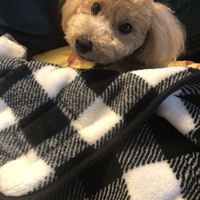Journal Articles by Rik Spanjers
This series concerns Comics Studies-with a capital "c" and a capital "s." It feels good to write ... more This series concerns Comics Studies-with a capital "c" and a capital "s." It feels good to write it that way. From emerging as a fringe interest within Literature and Media/Cultural Studies departments, to becoming a minor field, to maturing into the fastest growing field in the Humanities, to becoming a nascent discipline, the journey has been a hard but spectacular one. Those capital letters have been earned. Palgrave Studies in Comics and Graphic Novels covers all aspects of the comic strip, comic book, and graphic novel, explored through clear and informative texts offering expansive coverage and theoretical sophistication. It is international in scope and provides a space in which scholars from all backgrounds can present new thinking about politics, history, aesthetics, production, distribution, and reception as well as the digital realm.
This series concerns Comics Studies-with a capital "c" and a capital "s." It feels good to write ... more This series concerns Comics Studies-with a capital "c" and a capital "s." It feels good to write it that way. From emerging as a fringe interest within Literature and Media/Cultural Studies departments, to becoming a minor field, to maturing into the fastest growing field in the Humanities, to becoming a nascent discipline, the journey has been a hard but spectacular one. Those capital letters have been earned. Palgrave Studies in Comics and Graphic Novels covers all aspects of the comic strip, comic book, and graphic novel, explored through clear and informative texts offering expansive coverage and theoretical sophistication. It is international in scope and provides a space in which scholars from all backgrounds can present new thinking about politics, history, aesthetics, production, distribution, and reception as well as the digital realm.

Historical representations in comics have often been lauded for the subjective view they offer on... more Historical representations in comics have often been lauded for the subjective view they offer on historical events. In this view, these comics’ subjective approach to history arises partly from their hand drawn graphic
style. In this article, I argue that there is no such thing as a unified or singular comics style. Rather, the hand drawn images presented in comics can vary from the schematic to the near photorealistic, each of these styles,
or combinations thereof, moreover, have their own connotations with regards to the representations’ veracity. In an analysis of Shigeru Mizuki’s Onwards Towards Our Noble Deaths, I demonstrate how this historical
war comic depicting the hardships of a Japanese soldier during the Pacific War constructs its own brand of realism by combining the schematic with the near photorealistic in different ways on its pages. Realism in historical war comics, I argue, building on both Jameson’s Antinomies of Realism and Gombrich’s Preference for the Primitive, arises from a juxtaposition of competing graphic styles that are continually combined in different manners to different effects. Only such a conception of realism as a continuous struggle to challenge the conventions of other realisms is able to shed light on how Onwards Towards Our Noble Deaths both approximates an experience of war and shows the fundamental impossibility of a representation of the past as it really was.
Introduction to the thematic cluster of Image[&]Narrative 17.4
Conferences by Rik Spanjers
Amsterdam Comics is pleased to announce its 2nd international conference, “Drawing Yourself In an... more Amsterdam Comics is pleased to announce its 2nd international conference, “Drawing Yourself In and Out of It,” which will take place from 15-17 November 2018 at Vrije Universiteit Amsterdam, Netherlands. Comprised of parallel panel sessions, keynote lectures, and a roundtable discussion, the conference aims to encourage interdisciplinary connections between comics scholars from various disciplines, comics artists, publishers, and cultural workers from museums and other heritage sites.
Keynote Speakers
Joe Sacco, comics artist
Nina Mickwitz, University of the Arts London
Master class open to: RMa students who are a member of a Dutch Graduate Research School (onderzoe... more Master class open to: RMa students who are a member of a Dutch Graduate Research School (onderzoekschool). RMa students who are members of OSL will have first access. RMa Students will receive 1 EC for attending the full day and preparing an object of inquiry for the master class.

Amsterdam Comics is pleased to announce our inaugural international conference, “Comics Interacti... more Amsterdam Comics is pleased to announce our inaugural international conference, “Comics Interaction,” which will take place from 1-3 July in Amsterdam, Netherlands. Comprised of three days of parallel panel sessions, round table discussions, and public keynote lectures, the conference aims to encourage interdisciplinary connections between comics scholars from various disciplines, comics artists, publishers, and cultural workers from museums and other heritage sites. The conference will focus on three themes of comics interaction: Comics in Art, Art in Comics; History and Trauma in Comics; and Comics as World Literature. The conference will be hosted at the University of Amsterdam and several local cultural institutions.
Keynote Speakers:
Prof. Dr. Jan Baetens, University of Leuven, Belgium
Prof. Dr. Bart Beaty, University of Calgary, Canada
Dr. Joyce Goggin, University of Amsterdam, Netherlands
Application:
Applicants to the conference are invited to submit a 250 word abstract, short biographical note, and indication of theme preference by 17 April 2015 to the organizers, drs. Rik Spanjers and Dr. Erin La Cour, at info@amsterdamcomics.com.
For more information about the conference themes see PDF-file.
Book Contributions by Rik Spanjers
"Barefoot Gen" p. 904-905
"History" p. 1068-1071
"Naruto"
Small text about the popular manga series Naruto in this reference book.
"Bleach"
Small text about the popular manga series "Bleach" in this reference book.
"Ode to Kirihito"
Short text about Osamu Tezuka's "Ode to Kirihito" in this reference book.
Master Thesis by Rik Spanjers
In this, my research master thesis, I looked at laughter as a form of resistance in Alan Moore an... more In this, my research master thesis, I looked at laughter as a form of resistance in Alan Moore and Brian Bolland's The Killing Joke, Tim Burton's Batman and Christopher Nolan's The Dark Knight. The aim is to analyze if the Joker's most famous characteristic, his continuous laughter, can be seen as a form of resistance in itself. Following two laughing theorists, Nietzsche and Foucault, this work analyzes the laughter and the madness of the Joker in three of its most famous incarnations.
Conference Presentations by Rik Spanjers

One of the most remarkable stylistic aspects of Shigeru Mizuki’s (1922-) Onwards Towards Our Nobl... more One of the most remarkable stylistic aspects of Shigeru Mizuki’s (1922-) Onwards Towards Our Noble Deaths (Gekiga, Sôin Gyokusai Seyo! 1973) is its overt use of two very distinct graphic styles. Large parts of this semi-autobiographical story about a troop of Japanese soldiers’ misfortunes in Papua New Guinea during the Pacific War are rendered in a cartoonesque style. Simultaneously, a substantial portion of this anti-war story is captured in a photorealistic style. In my presentation, I will argue that through the constant shifting between different graphic styles, Onwards addresses two conflicting conceptions of realism vis-à-vis the representation of World War II in comics. On the one hand, there is a more traditional notion of photorealism. On the other hand, there is the notion that comics, through both formal and culture historical aspects of the medium, are said to be able to represent the War more accurately. I will argue that seen from a certain perspective, there is a cultural history of historical comics that is completely caught up in this dialectical struggle between realism and its other. In the case of MIzuki’s work, more importantly, it is this clash itself that is put to work in order to represent the conflictual past in a form that is in itself a conflict.
I presented versions of this paper at the NNCORE conference in Oslo (2015), the Comfor Conference in Frankfurt (2015) and the Amsterdam Comics Conference: Comics Interaction (2015).

Was awarded the best presentation of the conference.
The concept of Neo-Historical fiction ampl... more Was awarded the best presentation of the conference.
The concept of Neo-Historical fiction amplifies a tension that is central to discussions of the potential of historical fiction. This tension arises from a question that came to the forefront of the academic discussion of historical fiction through Lukács famous work on the subject: can historical fictions have a revolutionary potential or are they a form of escapist literature. It is along the lines of this rather dualist approach to the potential of historical fiction that much discussion about it has gravitated. In recent times, regretfully, the escapist tendencies have been stressed by thinkers such as Jameson.
With the term Neo-historical fiction, a reverse seems to be taking place. In my reading of the term, it signals that the way in which Lukács read historical novels, as expressions of contemporary political questions, has now become an active practice among writers of historical fiction. The ‘what if’ question, previously located quite exclusively in the realm of science fiction, seems to have found its way back to historical fiction once again.
From such a perspective, works that before seemed to invoke remembrance and functioned like monuments are now, once again, readable from a more politically engaging perspective. It is from such a point of view that I want to read two recent historical representations in comics form. In these comics, Greg Pak set out to reinvent the pasts of two of Marvel’s most iconic villains in the context of the Shoah. The works, which show the tragic childhoods of the villains simultaneously invoke us to ‘never forget’ and ‘never repeat’. This first invocation leads to a more testimonial or memorial narrative spin while ‘never repeat’ seems to lead to a reading that focuses on how Pak aims to warn readers against social conditions and personal choices that might lead to a similar situation. In my analysis of these comics I will show how these works balance between testimony and warning and as such show traits that might be characterized as neo-historical fiction as well as traits that could be related to the more negatively framed traditional historical fiction. My hypothesis is that these comics function on a dialectic between testimony and political engagement and as such shatter any such easy dualist approach to the political engagement or escapism of historical fiction.

Peter Pontiac’s Kraut is a 167-page illustrated letter addressed to Pontiac’s father. It is one o... more Peter Pontiac’s Kraut is a 167-page illustrated letter addressed to Pontiac’s father. It is one of the most highly acclaimed Dutch graphic novels made by one of the few Dutch authors to have actively participated in the American underground comix scene. The work revolves around two questions: (1) why Joop Pollmann, Peter Pontiac’s father, collaborated with the German occupier during World War II and, (2) why he disappeared in February 1978. It’s page-layout is constituted of large sections of handwritten text combined with images and other incorporated texts – writings by his father for the German war propaganda, history books, police reports, and court testimonies. The pages of Kraut do not have a conventional paneled layout that is common to most comics. Because of the difficulties of translating all these different kinds of handwritten texts, Kraut has regretfully not yet been translated.
My analysis of Kraut will reveal that when specifically focusing on this comic’s deployment of text, it becomes apparent that these texts, through the use of handwriting and the composition of text, generate meaning through their visual properties as well as by way of the narrative that is represented. In Kraut, the constant conflict between narrative and visual properties of text is played upon and made productive in order to represent a past that is also highly conflicted.
In this presentation, I attempt to analyze the strange triad of historical and fictional characte... more In this presentation, I attempt to analyze the strange triad of historical and fictional characters at the heart of Osamu Tezuka's Message to Adolf. The mixing of fiction and historical characters is here taken to an extreme through the existence of three characters names Adolf from wildly different cultural backgrounds.
Presentation for the VAL-studiedag of the Catholic University Leuven in 2011
Presentation for the ASCA conference in Amsterdam, 2011.










Uploads
Journal Articles by Rik Spanjers
style. In this article, I argue that there is no such thing as a unified or singular comics style. Rather, the hand drawn images presented in comics can vary from the schematic to the near photorealistic, each of these styles,
or combinations thereof, moreover, have their own connotations with regards to the representations’ veracity. In an analysis of Shigeru Mizuki’s Onwards Towards Our Noble Deaths, I demonstrate how this historical
war comic depicting the hardships of a Japanese soldier during the Pacific War constructs its own brand of realism by combining the schematic with the near photorealistic in different ways on its pages. Realism in historical war comics, I argue, building on both Jameson’s Antinomies of Realism and Gombrich’s Preference for the Primitive, arises from a juxtaposition of competing graphic styles that are continually combined in different manners to different effects. Only such a conception of realism as a continuous struggle to challenge the conventions of other realisms is able to shed light on how Onwards Towards Our Noble Deaths both approximates an experience of war and shows the fundamental impossibility of a representation of the past as it really was.
Conferences by Rik Spanjers
Keynote Speakers
Joe Sacco, comics artist
Nina Mickwitz, University of the Arts London
Keynote Speakers:
Prof. Dr. Jan Baetens, University of Leuven, Belgium
Prof. Dr. Bart Beaty, University of Calgary, Canada
Dr. Joyce Goggin, University of Amsterdam, Netherlands
Application:
Applicants to the conference are invited to submit a 250 word abstract, short biographical note, and indication of theme preference by 17 April 2015 to the organizers, drs. Rik Spanjers and Dr. Erin La Cour, at info@amsterdamcomics.com.
For more information about the conference themes see PDF-file.
Book Contributions by Rik Spanjers
Master Thesis by Rik Spanjers
Conference Presentations by Rik Spanjers
I presented versions of this paper at the NNCORE conference in Oslo (2015), the Comfor Conference in Frankfurt (2015) and the Amsterdam Comics Conference: Comics Interaction (2015).
The concept of Neo-Historical fiction amplifies a tension that is central to discussions of the potential of historical fiction. This tension arises from a question that came to the forefront of the academic discussion of historical fiction through Lukács famous work on the subject: can historical fictions have a revolutionary potential or are they a form of escapist literature. It is along the lines of this rather dualist approach to the potential of historical fiction that much discussion about it has gravitated. In recent times, regretfully, the escapist tendencies have been stressed by thinkers such as Jameson.
With the term Neo-historical fiction, a reverse seems to be taking place. In my reading of the term, it signals that the way in which Lukács read historical novels, as expressions of contemporary political questions, has now become an active practice among writers of historical fiction. The ‘what if’ question, previously located quite exclusively in the realm of science fiction, seems to have found its way back to historical fiction once again.
From such a perspective, works that before seemed to invoke remembrance and functioned like monuments are now, once again, readable from a more politically engaging perspective. It is from such a point of view that I want to read two recent historical representations in comics form. In these comics, Greg Pak set out to reinvent the pasts of two of Marvel’s most iconic villains in the context of the Shoah. The works, which show the tragic childhoods of the villains simultaneously invoke us to ‘never forget’ and ‘never repeat’. This first invocation leads to a more testimonial or memorial narrative spin while ‘never repeat’ seems to lead to a reading that focuses on how Pak aims to warn readers against social conditions and personal choices that might lead to a similar situation. In my analysis of these comics I will show how these works balance between testimony and warning and as such show traits that might be characterized as neo-historical fiction as well as traits that could be related to the more negatively framed traditional historical fiction. My hypothesis is that these comics function on a dialectic between testimony and political engagement and as such shatter any such easy dualist approach to the political engagement or escapism of historical fiction.
My analysis of Kraut will reveal that when specifically focusing on this comic’s deployment of text, it becomes apparent that these texts, through the use of handwriting and the composition of text, generate meaning through their visual properties as well as by way of the narrative that is represented. In Kraut, the constant conflict between narrative and visual properties of text is played upon and made productive in order to represent a past that is also highly conflicted.
style. In this article, I argue that there is no such thing as a unified or singular comics style. Rather, the hand drawn images presented in comics can vary from the schematic to the near photorealistic, each of these styles,
or combinations thereof, moreover, have their own connotations with regards to the representations’ veracity. In an analysis of Shigeru Mizuki’s Onwards Towards Our Noble Deaths, I demonstrate how this historical
war comic depicting the hardships of a Japanese soldier during the Pacific War constructs its own brand of realism by combining the schematic with the near photorealistic in different ways on its pages. Realism in historical war comics, I argue, building on both Jameson’s Antinomies of Realism and Gombrich’s Preference for the Primitive, arises from a juxtaposition of competing graphic styles that are continually combined in different manners to different effects. Only such a conception of realism as a continuous struggle to challenge the conventions of other realisms is able to shed light on how Onwards Towards Our Noble Deaths both approximates an experience of war and shows the fundamental impossibility of a representation of the past as it really was.
Keynote Speakers
Joe Sacco, comics artist
Nina Mickwitz, University of the Arts London
Keynote Speakers:
Prof. Dr. Jan Baetens, University of Leuven, Belgium
Prof. Dr. Bart Beaty, University of Calgary, Canada
Dr. Joyce Goggin, University of Amsterdam, Netherlands
Application:
Applicants to the conference are invited to submit a 250 word abstract, short biographical note, and indication of theme preference by 17 April 2015 to the organizers, drs. Rik Spanjers and Dr. Erin La Cour, at info@amsterdamcomics.com.
For more information about the conference themes see PDF-file.
I presented versions of this paper at the NNCORE conference in Oslo (2015), the Comfor Conference in Frankfurt (2015) and the Amsterdam Comics Conference: Comics Interaction (2015).
The concept of Neo-Historical fiction amplifies a tension that is central to discussions of the potential of historical fiction. This tension arises from a question that came to the forefront of the academic discussion of historical fiction through Lukács famous work on the subject: can historical fictions have a revolutionary potential or are they a form of escapist literature. It is along the lines of this rather dualist approach to the potential of historical fiction that much discussion about it has gravitated. In recent times, regretfully, the escapist tendencies have been stressed by thinkers such as Jameson.
With the term Neo-historical fiction, a reverse seems to be taking place. In my reading of the term, it signals that the way in which Lukács read historical novels, as expressions of contemporary political questions, has now become an active practice among writers of historical fiction. The ‘what if’ question, previously located quite exclusively in the realm of science fiction, seems to have found its way back to historical fiction once again.
From such a perspective, works that before seemed to invoke remembrance and functioned like monuments are now, once again, readable from a more politically engaging perspective. It is from such a point of view that I want to read two recent historical representations in comics form. In these comics, Greg Pak set out to reinvent the pasts of two of Marvel’s most iconic villains in the context of the Shoah. The works, which show the tragic childhoods of the villains simultaneously invoke us to ‘never forget’ and ‘never repeat’. This first invocation leads to a more testimonial or memorial narrative spin while ‘never repeat’ seems to lead to a reading that focuses on how Pak aims to warn readers against social conditions and personal choices that might lead to a similar situation. In my analysis of these comics I will show how these works balance between testimony and warning and as such show traits that might be characterized as neo-historical fiction as well as traits that could be related to the more negatively framed traditional historical fiction. My hypothesis is that these comics function on a dialectic between testimony and political engagement and as such shatter any such easy dualist approach to the political engagement or escapism of historical fiction.
My analysis of Kraut will reveal that when specifically focusing on this comic’s deployment of text, it becomes apparent that these texts, through the use of handwriting and the composition of text, generate meaning through their visual properties as well as by way of the narrative that is represented. In Kraut, the constant conflict between narrative and visual properties of text is played upon and made productive in order to represent a past that is also highly conflicted.
Key Terms: Image-text relations, visual studies, multimodality, comics, image-text